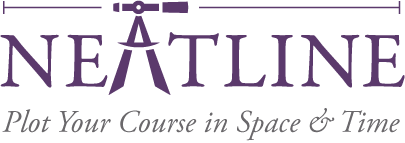Over the past few months, we have drastically altered the technical undergirding of Neatline for three reasons. Our new plan will produce tools that more people will be able to use. The new style of development will permit faster, better work. Lastly, we will be developing in concert with a much larger community.
Our new technical plan replaces a large number of components with one: Omeka. Omeka is a software framework for collections-based research and Web-based exhibitions created by historians at George Mason University. It will provide us several of the key technical facilities we require for our work. For example, the suite of simple Web-forms to facilitate the ingestion of EAD documents and historical raster-imagery data that we have undertaken to create are now backed by Omeka, which offers generic forms for similar needs that can be customized to our specific plan. It will take only a few weeks to create them by building on Omeka, whereas it would have taken several months to do “from scratch”. By creating our new software tools as “plugins” to the Omeka machinery, we are taking advantage of many such efficiencies. What is more, we are allowing for our future user-community to use our Neatline software in conjunction with a large and growing suite of other Omeka plugins for such tasks as media playback, sophisticated indexing, inter al. Our software development effort is being partially hosted by the Omeka development group at GMU, which not only eliminates the small overhead we would incur to host it locally, but provides us with visibility in a large a growing community of Omeka users.
We have accomplished several milestones in recent weeks. An Omeka plugin for managing georeferenced historic maps has been created and made public to the Omeka community. It has garnered considerable interest. We have accomplished much of the modeling and basic engineering for another Omeka plugin which will manage geographic features. We are currently working on a third which will accomplish the import of EAD into a Neatline project. This component, in particular,will be useful to many people who have no special interest in maps or geography. It will provide a useful and simple way to open archives onto the Web and create curated exhibitions of archival material. — Adam
